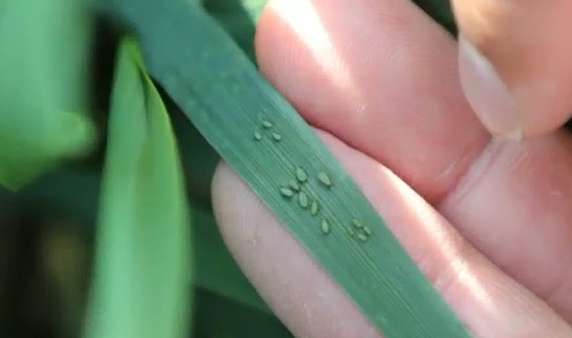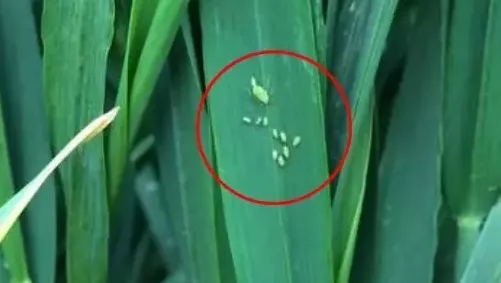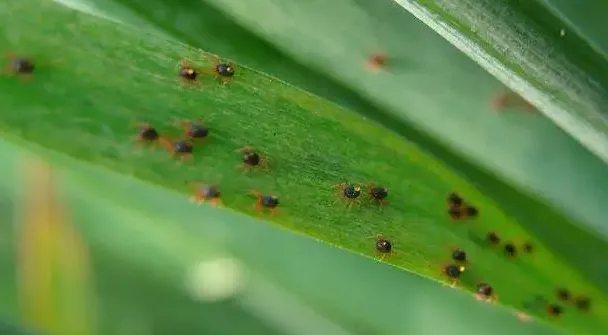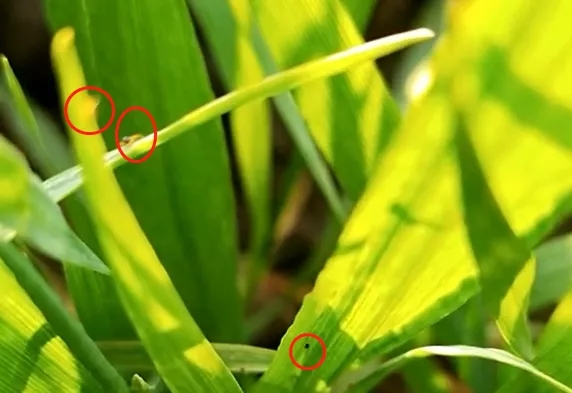邮箱:amanda@sixf.com.cn 电话: 400-6597-130
What if Wheat Aphids and Red Spiders Occur Together? Use it
2025-04-15 14:27
On the Feast of Insects, the hoe never stops. Insects Awaken is a solar term with a rapid increase in temperature throughout the year. As the temperature rises, red spiders, aphids, and sheath blight in wheat fields occur, expand, and spread one after another.
The prevention and control of wheat sheath blight was discussed in "What pesticides should be used for wheat sheath blight? Wheat sheath blight prevention and control technology" yesterday. Today, I will talk about wheat aphids and red spider mites.
Wheat aphids
The damage caused by aphids to wheat can be divided into two aspects: direct damage and indirect damage.

Direct harm:It directly harms the wheat itself, attaching to the leaves, stems or ears and sucking the juice, causing yellowing leaves, growth stagnation or white ears. In particularly serious cases, the entire wheat plant will die.
Indirect harm:Aphids act as carriers of some viral diseases, causing outbreaks of viral diseases and thus harming wheat. For example, wheat yellow dwarf disease causes wheat to grow shorter after the disease occurs. The main route of transmission is aphids, which affects the later yield and quality.

Wheat aphids start to occur when wheat turns green and are in a slow growth period until wheat heads and flowers. After wheat flowers, the occurrence rate will increase sharply. Preventing and controlling aphids before the flowering period can achieve the effect of controlling aphid damage throughout the entire growth period.
Therefore, for the prevention and control of wheat aphids, we should start to pay attention to prevention from the time of regreening and jointing.
Wheat spider mite
Wheat red spider is a common pest of wheat in spring, known as the vampire of wheat. It mainly harms wheat leaves and sucks sap.

In the early stage of wheat red spider mites, they mainly harm the middle and lower leaves of wheat, and chlorotic spots appear on the leaves. As the number of red spider mites gradually increases, red patches appear on the leaves, and the leaves curl up partially or even completely. The leaves turn yellow or reddish brown, the plants have poor growth, slow growth, and a reduced ear formation rate. When the disease is serious, the ears are small and the grains are light, the fruit set rate is reduced, the yield decreases, and even the whole plant dries up.

Wheat spider mites can be divided into wheat long-legged spider mites and wheat round spider mites. Both types of spider mites begin to lay eggs, reproduce, and cause harm in March and April each year. The adults and eggs of the two types of spider mites hibernate in the topsoil, the roots of wheat seedlings, and the roots of weeds in winter; the adults begin to move and the overwintering eggs begin to hatch in mid-February; they begin to reproduce and cause harm to wheat fields in March and April, and the number of insects reaches a peak in mid-to-late March; the number of insects decreases after mid-to-late May, and the degree of damage begins to ease.
Prevention and control measures
Spraying SixF Maibahe in time during the wheat greening and jointing period can effectively prevent and control wheat aphids and red spiders (Maibahe contains attractants that can lure out the highly hidden aphids and red spiders and kill them all at once, completely and thoroughly). It can also prevent the occurrence of wheat stripe blight and rust, improve the crop's resistance to stress, and increase the thousand-grain weight.

Copyright © 2020-2021 SixF Crop Protection Co., Ltd. All rights reserved Powered by SIXF